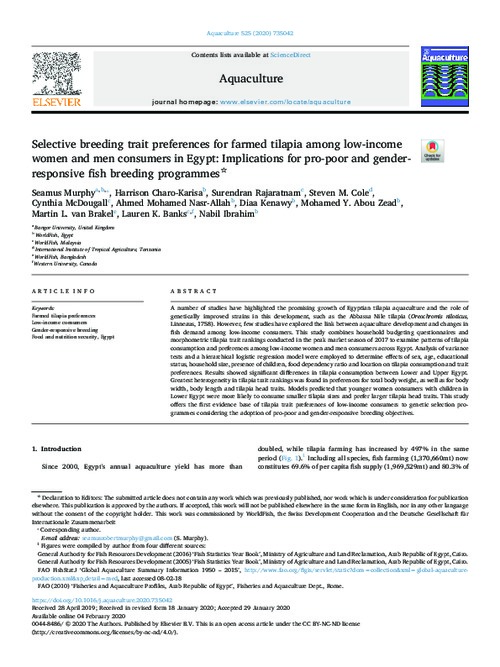Selective breeding trait preferences for farmed tilapia among low-income women and men consumers in Egypt; Implications for pro-poor and gender-responsive fish breeding programmes
Abstract
A number of studies have highlighted the promising growth of Egyptian tilapia aquaculture and the role of genetically improved strains in this development, such as the Abbassa Nile tilapia (Oreochromis niloticus, Linneaus, 1758). However, few studies have explored the link between aquaculture development and changes in fish demand among low-income consumers. This study combines household budgeting questionnaires and morphometric tilapia trait rankings conducted in the peak market season of 2017 to examine patterns of tilapia consumption and preferences among low-income women and men consumers across Egypt. Analysis of variance tests and a hierarchical logistic regression model were employed to determine effects of sex, age, educational status, household size, presence of children, food dependency ratio and location on tilapia consumption and trait preferences. Results showed significant differences in tilapia consumption between Lower and Upper Egypt. Greatest heterogeneity in tilapia trait rankings was found in preferences for total body weight, as well as for body width, body length and tilapia head traits. Models predicted that younger women consumers with children in Lower Egypt were more likely to consume smaller tilapia sizes and prefer larger tilapia head traits. This study offers the first evidence base of tilapia trait preferences of low-income consumers to genetic selection programmes considering the adoption of pro-poor and gender-responsive breeding objectives

